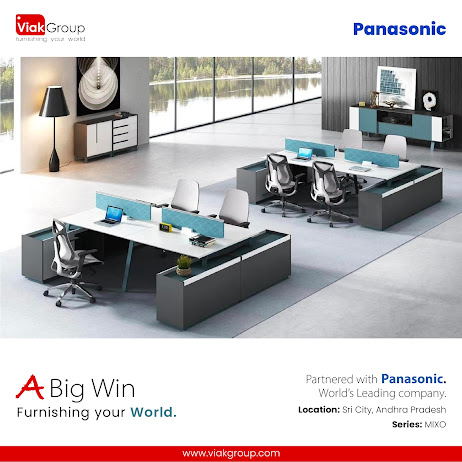The Evolution of Modular Furniture: From Traditional to Contemporary Designs
Introduction:
Modular furniture has come a long way over the years, evolving from easy and functional designs to contemporary pieces by Viak Group that blend fashion and versatility. This blog explores the fascinating trip of furniture, tracing its transformation from typical to contemporary designs.
Join us as we delve into the history, explore top notch milestones, and spotlight the key points of contemporary modular furniture.
1. The Origins of Modular Furniture:
Modular furniture has its roots in historical civilizations, where portable and multi-functional portions have been used to maximize limited space. From the Egyptian collapsible stools to the Roman folding tables, early examples showcased the practicality and adaptability that outline furniture.
2. Industrial Revolution and Standardization:
The Industrial Revolution introduced sizable advancements in furnishings production, leading to the standardization of modular components. The upward thrust of mass manufacturing and interchangeable components enabled the introduction of modular pieces that could be easily assembled, disassembled, and reconfigured.
3. Mid-century Modernism:
The mid-20th century witnessed a surge in innovative furnishings designs, and furniture became an imperative phase of the mid-century present day movement. Influential designers like Charles and Ray Eames, George Nelson, and Florence Knoll embraced modular concepts, introducing iconic portions such as the Eames Storage Unit and the Nelson Platform Bench.
4. Versatility and Customization:
As the 20th century progressed, modular office furniture were developed to offer extended versatility and customization options. Designers diagnosed the want for fixtures that could adapt to altering needs and lifestyles. Modular sofas with interchangeable modules, storage structures with adjustable shelves, and modular shelving units became famous picks for householders searching for flexibility in their residing spaces.
5. Contemporary Designs:
In the modern era, present day furniture has reached new heights of innovation and style. Designers and producers are pushing the boundaries of what is viable with modular concepts. Contemporary modular furniture blends smooth aesthetics, ergonomic designs, and latest materials to create purposeful and visually placing pieces.
6. Key Features of Modern Modular Furniture:
Today, modular office furniture gives a variety of features that cater to various needs. These points consist of modular units that can be easily connected or detached, customizable configurations to suit character preferences, and built-in storage options that maximize area utilization. Additionally, developments in science have led to the incorporation of smart aspects like built-in charging stations and wi-fi connectivity.
7. Sustainability and Eco-friendly Practices:
Contemporary furniture additionally places emphasis on sustainability. Many producers are using eco-friendly materials, using accountable manufacturing processes, and designing furniture that can be effortlessly disassembled and recycled. This focus on sustainability aligns with the developing recognition of environmental troubles and the want for more eco-conscious lifestyles.
Conclusion:
At Viak Group, evolution of modular furniture from typical to contemporary designs showcases the extremely good adaptability and ingenuity of furniture designers over the years. From its historical origins to the existing day, today's furniture has endured to evolve, supplying options for maximizing space, improving functionality, and reflecting modern plan aesthetics. Whether you decide upon a traditional modular design or a modern-day contemporary piece, modular furnishings by Viak Group stay a versatile and sensible preference for any living space.
Also Read:
Designing Your Dream Home with Modular Furniture
Top Modular Furniture Brands in Delhi: A Comprehensive Guide



.jpg)
Comments
Post a Comment